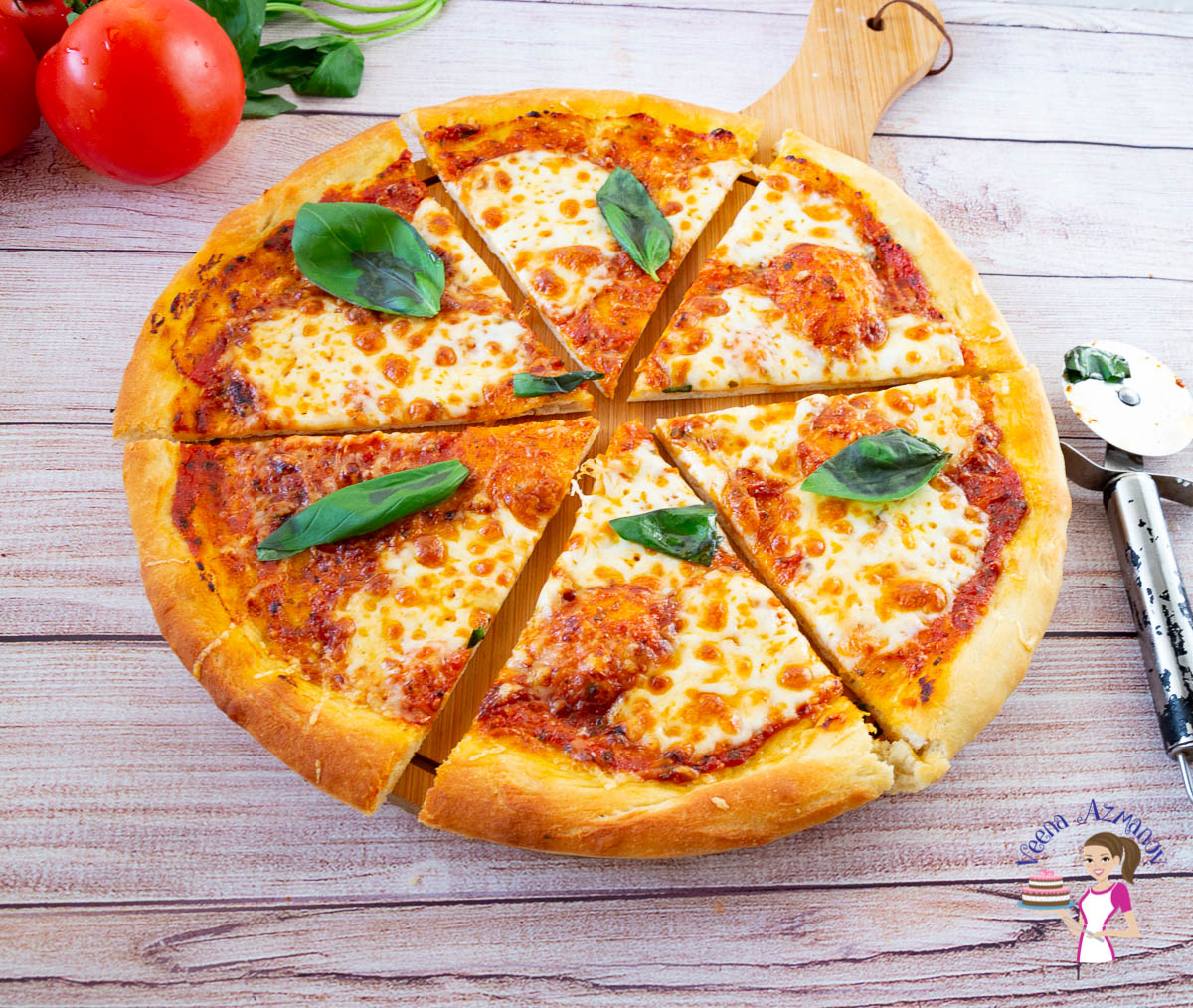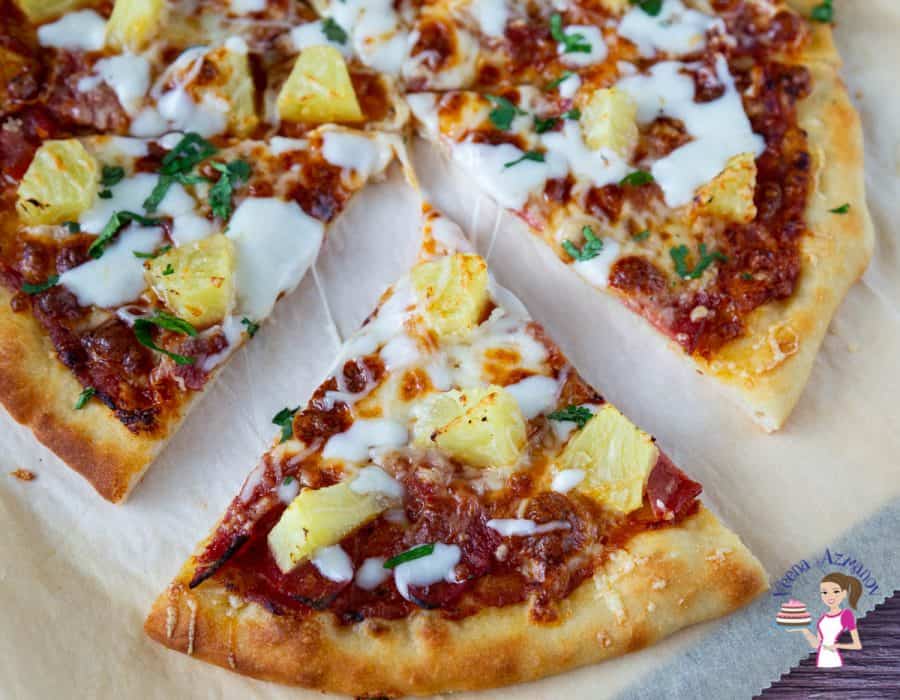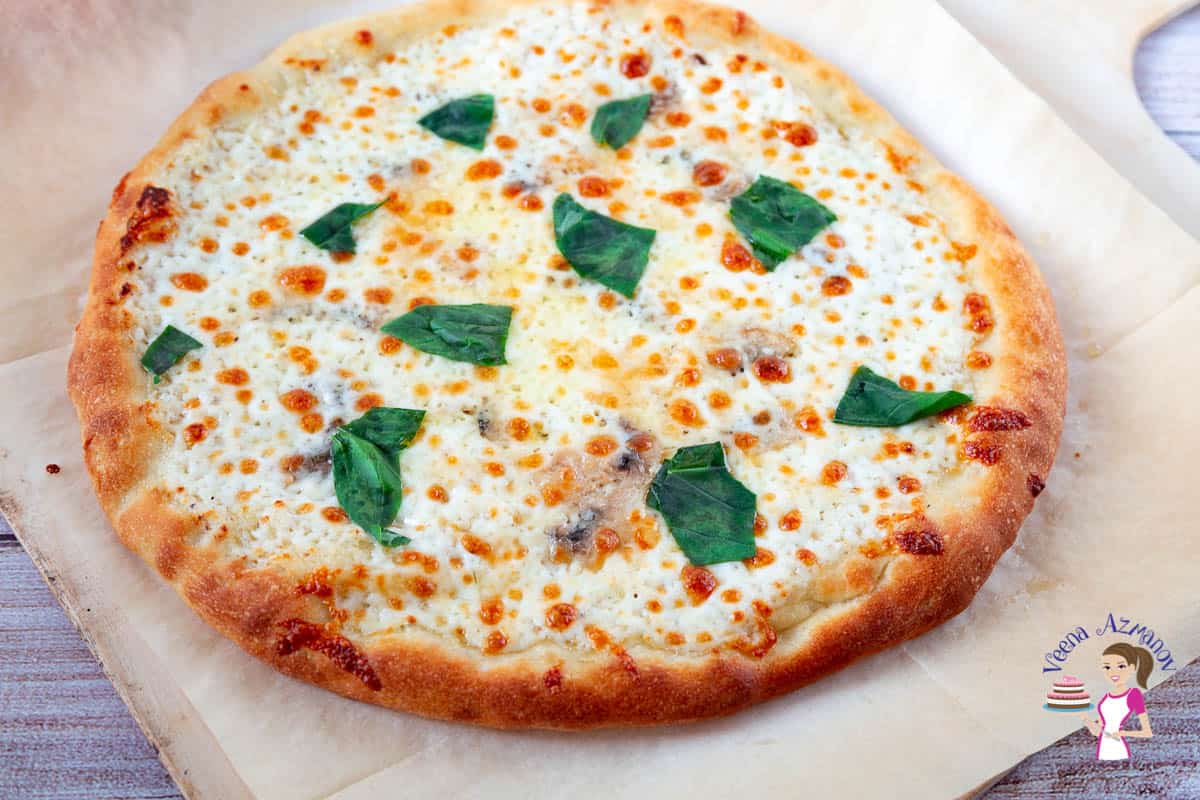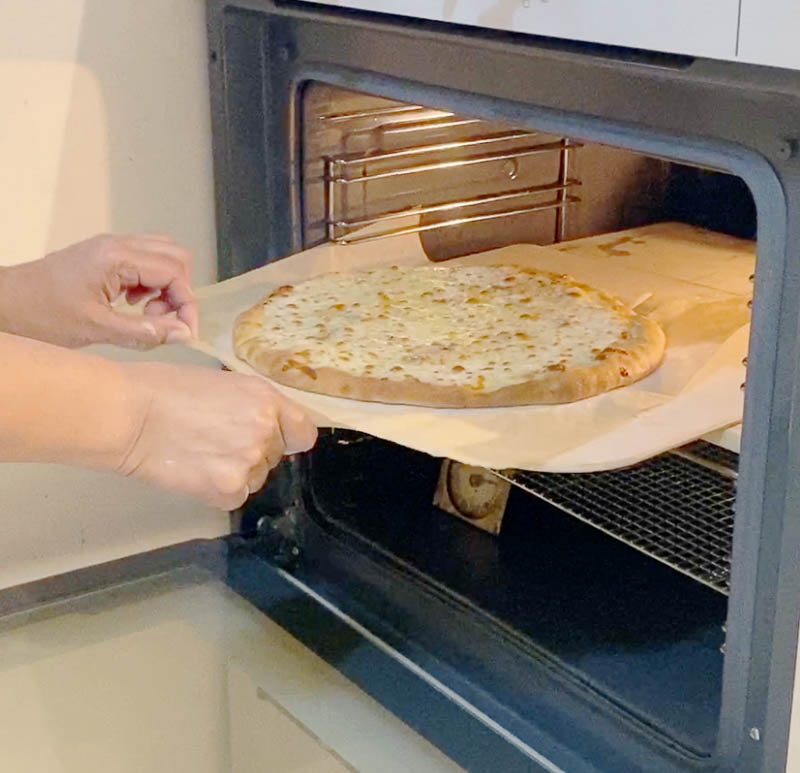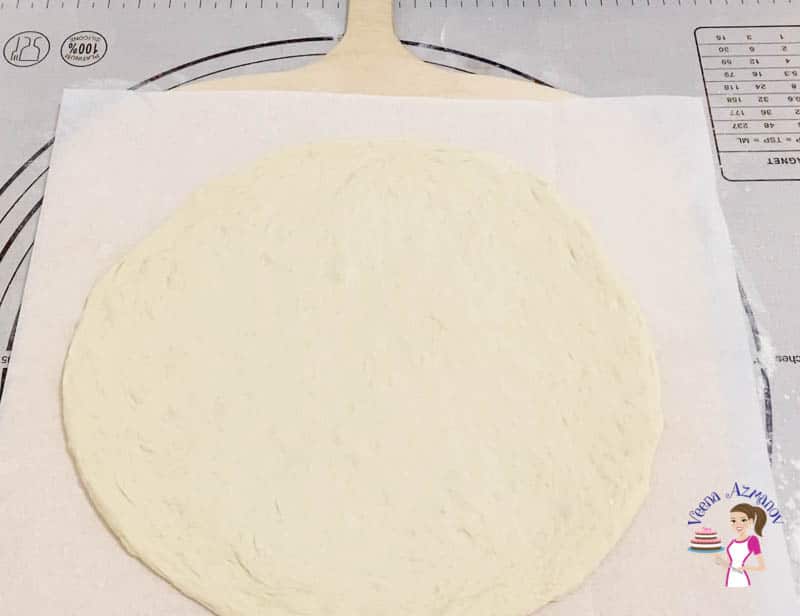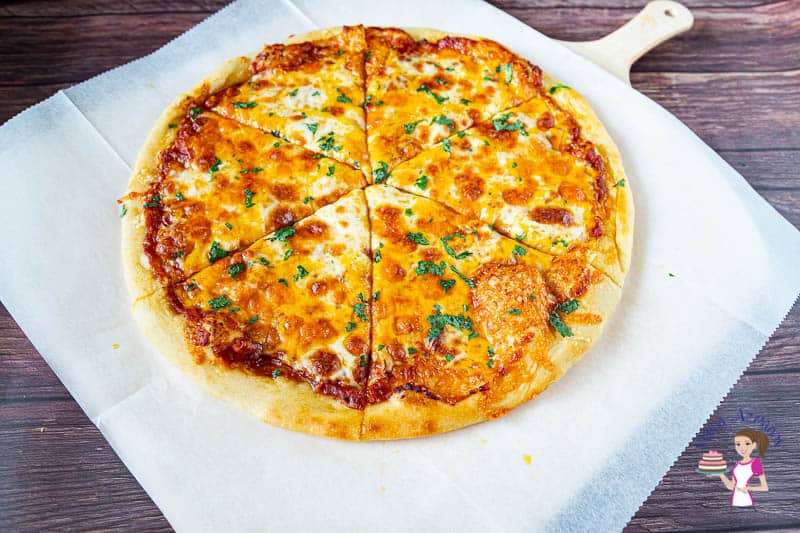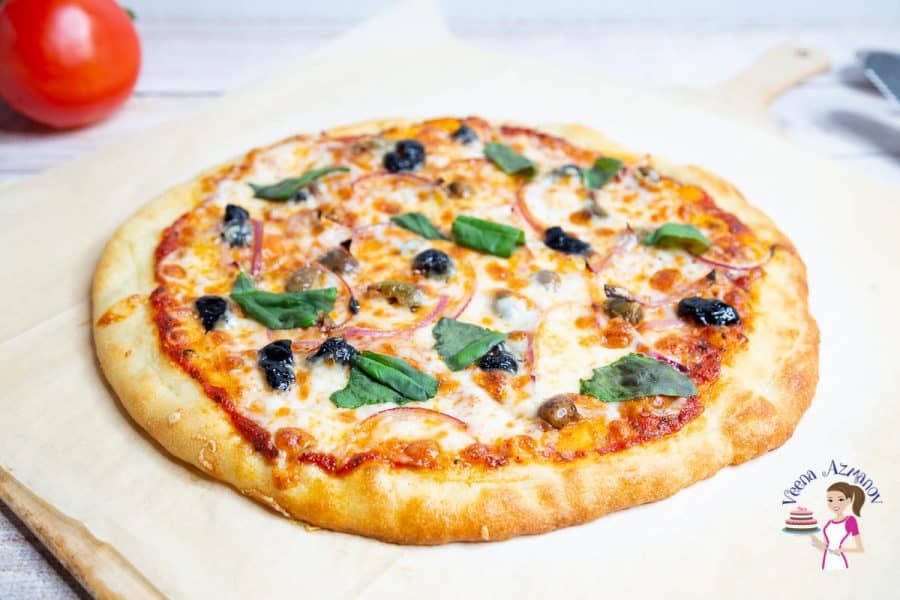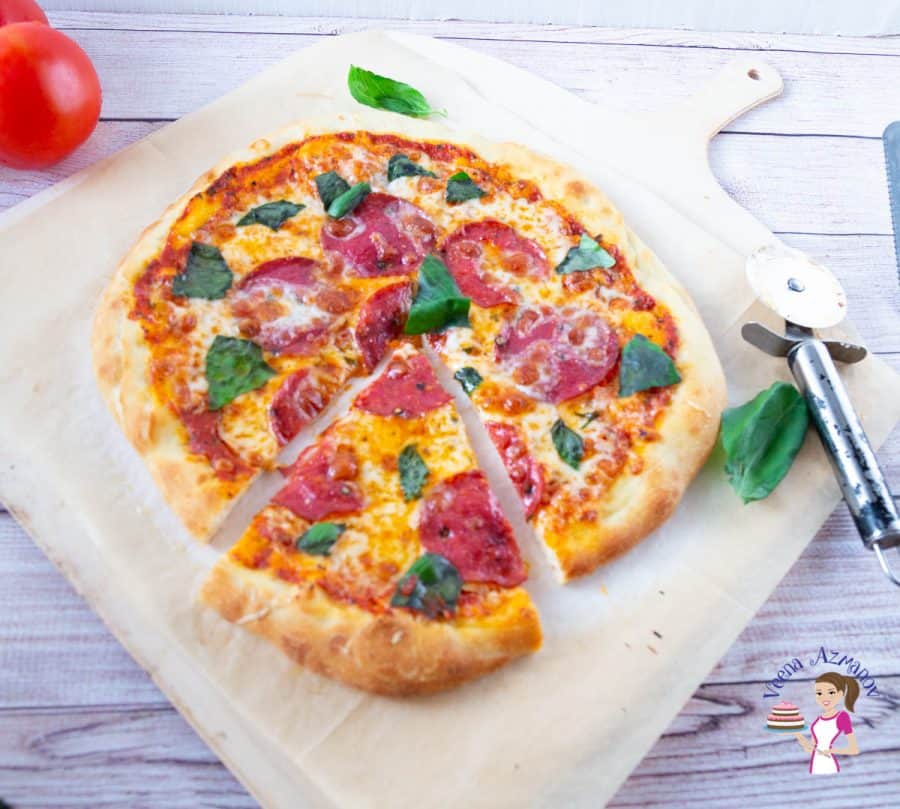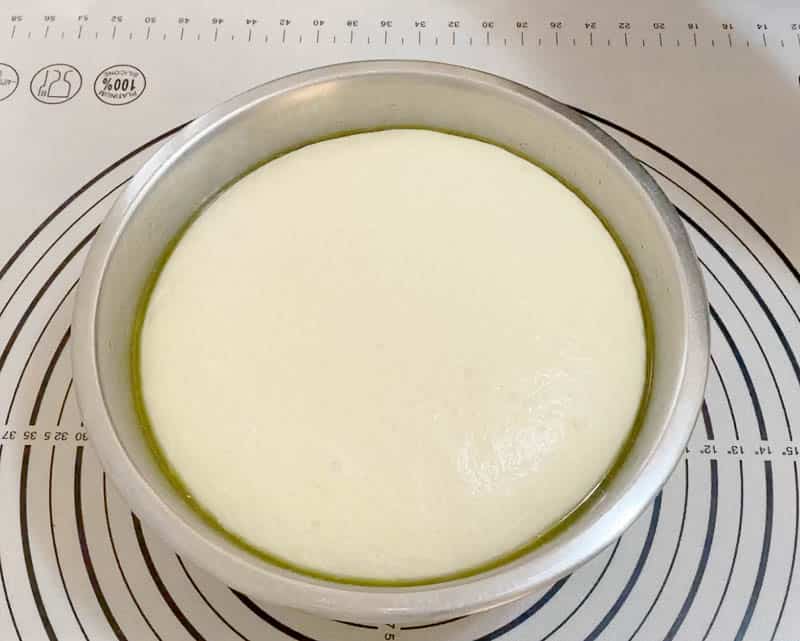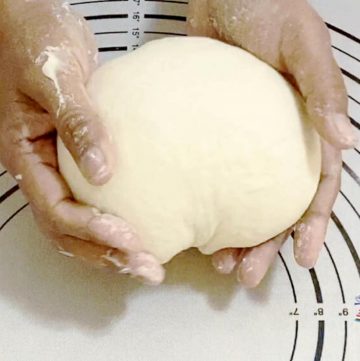Homemade pizza is a delicious and customizable dish that brings together the warmth of a freshly baked crust, the richness of tomato sauce, the gooeyness of melted cheese, and the flavors of various toppings. From classic combinations like pepperoni and mushrooms to more adventurous choices like barbecue chicken or Mediterranean-style with feta and olives, homemade pizza offers endless possibilities. Whether you prefer a thin and crispy crust or a thick and chewy one, making pizza at home allows you to tailor every aspect of the dish to your liking. It’s a fun and rewarding culinary experience that brings family and friends together to enjoy a slice of comfort and creativity. Pizza gained popularity outside of Naples in the 19th century, especially after Italy was unified, and Queen Margherita of Savoy tried a pizza topped with tomatoes, mozzarella cheese, and basil, which represented the colors of the Italian flag. This pizza, known as the Margherita pizza, became a symbol of Italian cuisine and helped popularize pizza throughout Italy and eventually the world.
Why make your own homemade pizza?
Making your own homemade pizza from scratch can be a rewarding and enjoyable experience for several reasons. It allows you to create a personalized, delicious meal that is often healthier, more cost-effective, and more enjoyable than store-bought options.
Customization: When you make your own pizza, you can customize it exactly to your liking. You can choose your favorite toppings, cheese, sauce, and crust thickness, ensuring that every bite is exactly how you want it. Quality Ingredients: By making your own pizza, you have control over the quality of the ingredients you use. You can choose fresh, high-quality ingredients, which can result in a tastier and healthier pizza compared to store-bought options. Freshness: Homemade pizza is often fresher than store-bought versions, as you can make it right before serving. This can enhance the flavors and textures of the pizza, making it more enjoyable to eat. Cost-Effective: Making your own pizza can be more cost-effective than ordering from a pizzeria, especially if you have a family or group to feed. You can also make multiple pizzas for the price of one delivery pizza. Fun and Creativity: Making pizza from scratch can be a fun and creative process. You can involve friends or family in the process, experiment with different toppings and flavors, and enjoy the satisfaction of creating a delicious meal from start to finish.
What makes a good pizza?
Several factors contribute to making a good pizza:
Quality Ingredients: Using high-quality ingredients, such as fresh tomatoes, mozzarella cheese, and authentic Italian meats, can greatly enhance the flavor of a pizza. Proper Dough: The dough should be properly kneaded and rested to develop gluten and achieve the desired texture—whether it’s thin and crispy or thick and chewy. Flavorful Sauce: A flavorful tomato sauce, seasoned with herbs and spices, can add depth to the pizza’s flavor profile. Balance of Toppings: A good pizza has a balance of toppings, ensuring that no single ingredient overpowers the others. Each topping should complement the others and contribute to the overall flavor. Even Distribution: Toppings should be evenly distributed across the pizza to ensure that each bite has a bit of everything. Proper Baking: The pizza should be baked at the right temperature and for the right amount of time to achieve a crispy crust and melted cheese without burning the toppings. Freshness: Using fresh ingredients and making the pizza just before serving can greatly enhance its flavor and texture. Creativity: While traditional pizzas are delicious, creativity in toppings and flavor combinations can make a pizza truly memorable.
Overall, a good pizza is one that has a well-balanced combination of high-quality ingredients, proper preparation techniques, and a touch of creativity.
Every pizza needs four components
Dough – while you can get ready-to-use pizza dough, you can just as well make your own in an hour or more. Classic pizza dough – needs to be kneaded plus an hour or two for rising and proofing. Overnight pizza dough – A softer dough with less yeast that needs overnight proofing. Perfect to plan ahead. No-knead pizza dough – For those times when you don’t have time to knead. The long rising is what gives this dough its structure. Sauce – you can use ready-to-use pizza sauce but you can also make your own and it does not take long. 5-minutes pizza sauce – this one is quick and easy mostly using ingredients you already have in your pantry. Marinara sauce – a thick marinara sauce is perfect over homemade pizza. Definitely better than one from the jar. Fresh tomato sauce – made with fresh tomatoes and one you can use for pizza or pasta. Cheese – For my pizzas, I like to use a combination of three kinds of cheese. The classic Parmesan and mozzarella, pus one other such as cheddar, feta, gouda, etc. Toppings – The options for this are endless from everything to nothing! Classic Margherita pizza – just tomato sauce, cheese, and a few basil leaves – pizza at its best! Mushroom pizza – a sprinkle of a combination of mushrooms is perfect if you love mushrooms. 3 cheese pizza – a cheese lover’s dream. Add any cheese you like! White pizza – instead of tomato sauce use a classic bechamel white sauce to give this one a new twist. Olives and red onions – a Mediterranean flair with salty olives and onions caramelized on top Hawaiian pizza – made with ham and pineapples – kids favorite! Pepperoni pizza – nothing says pizza with slices of pepperoni, does it? Pesto pizza – topped with red pesto instead of tomato sauce.
Now that we covered the four components, let me share my 10 tips for making amazing homemade pizzas.
10 Tips for Success
Use High-Quality Ingredients: High-quality ingredients can significantly elevate the flavor of your homemade pizza. Fresh vegetables, such as ripe tomatoes, bell peppers, and mushrooms, will add vibrant flavors and textures. Opt for good-quality meats, like Italian sausage or prosciutto, which will impart rich, savory notes. When it comes to cheese, fresh mozzarella or aged Parmesan can bring a creamy texture and distinctive taste to your pizza. Choosing the best ingredients you can find will ensure that your pizza is bursting with flavor from the first bite to the last.
Preheat Your Oven and Pizza Stone: Preheating your oven and pizza stone is crucial for achieving a crispy crust. A hot oven and stone help to quickly cook the dough, creating a crispy exterior while keeping the inside tender. Preheating for at least 30 minutes ensures that the stone is evenly heated, which is essential for even baking. This step is particularly important for thin-crust pizzas, as it helps prevent the dough from becoming soggy.
Use the Right Flour: The type of flour you use can have a significant impact on the texture and flavor of your pizza crust. High-protein flours, such as bread flour or Tipo “00” flour, are ideal for pizza dough. These flours have a higher gluten content, which helps the dough develop a chewy texture and good structure. Using the right flour will result in a crust that is both crispy on the outside and chewy on the inside.
Don’t Overload with Toppings: While it may be tempting to load up your pizza with toppings, doing so can lead to a soggy crust and uneven cooking. Use a light hand when adding toppings, spreading them evenly across the dough. This will ensure that each bite has a balance of flavors and textures. Avoid adding too much sauce or cheese, as this can also weigh down the crust and prevent it from cooking properly.
Stretch the Dough Properly: When stretching your pizza dough, it’s important to do so gently and evenly. Avoid overworking the dough, as this can make it tough and difficult to stretch. Use your hands to gently stretch the dough into a round shape, working from the center outward. If the dough resists stretching, let it rest for a few minutes before trying again. Properly stretching the dough will help ensure that your pizza has a uniform thickness and cooks evenly.
Use a Pizza Peel: A pizza peel is a valuable tool for transferring your pizza to the oven. Dust the peel with cornmeal or flour to prevent the dough from sticking. Once your pizza is assembled on the peel, carefully slide it onto the preheated pizza stone in the oven. The peel allows you to easily transfer the pizza without disturbing the toppings, ensuring that it cooks evenly.
Rotate the Pizza: If your oven tends to have hot spots, rotating the pizza halfway through baking can help ensure that it cooks evenly. Use a pizza peel or oven-safe gloves to carefully rotate the pizza 180 degrees. This will help prevent one side of the pizza from burning while the other side remains undercooked. Rotating the pizza is particularly important for achieving an evenly cooked crust. Let It Rest: Allow your pizza to rest for a few minutes after baking before slicing and serving. This allows the cheese to set slightly, making it easier to slice. It also allows the flavors to meld together, resulting in a more cohesive and flavorful pizza. Resting the pizza for just a few minutes can make a big difference in the final texture and taste.
Experiment with Flavors: One of the joys of making homemade pizza is the opportunity to experiment with different flavors and toppings. Don’t be afraid to get creative and try new combinations. Consider adding unconventional toppings like caramelized onions, roasted garlic, or spicy peppers. Mixing and matching different cheeses can also add depth and complexity to your pizza. Experimenting with flavors is a fun way to discover new favorites and make each pizza unique.
Have Fun: Above all, making homemade pizza should be a fun and enjoyable experience. Don’t stress too much about achieving perfection. Enjoy the process of kneading the dough, choosing your toppings, and watching your pizza bake to golden perfection. Whether you’re making pizza with family or friends, or simply treating yourself to a homemade meal, savor the experience and the delicious results.
Creative variations with your overnight pizza dough:
Stuffed Crust Pizza: Roll out the dough and place cheese sticks or shredded cheese along the edge. Fold the dough over the cheese and press to seal before adding your toppings and baking. Barbecue Chicken Pizza: Use barbecue sauce instead of tomato sauce, top with cooked chicken, red onions, and cilantro for a tangy twist. Pesto and Veggie Pizza: Spread pesto sauce on the dough and top with a variety of vegetables such as cherry tomatoes, bell peppers, and spinach for a fresh and flavorful pizza. Buffalo Chicken Pizza: Toss cooked chicken in buffalo sauce and top the pizza with the chicken, red onion, and a drizzle of ranch dressing for a spicy kick. Hawaiian Pizza: Top the dough with tomato sauce, ham, pineapple chunks, and mozzarella cheese for a sweet and savory combination. Mediterranean Pizza: Spread hummus on the dough and top with roasted vegetables, olives, feta cheese, and a sprinkle of za’atar for a Mediterranean-inspired pizza. Breakfast Pizza: Use the dough as a base for a breakfast pizza by topping it with scrambled eggs, cooked bacon or sausage, and cheese for a hearty morning meal. Dessert Pizza: For a sweet treat, top the dough with Nutella or chocolate spread, sliced bananas, and a sprinkle of cinnamon sugar before baking.
Creative ways to serve pizza that can elevate your dining experience:
Pizza Cones: Roll out the dough into a cone shape and bake until crispy. Fill the cone with your favorite pizza toppings and enjoy a handheld pizza cone. Pizza Rolls: Roll out the dough into a rectangle, add toppings, roll it up, and slice into rolls. Bake until golden brown for delicious pizza roll-ups. Pizza Cupcakes: Press small circles of dough into a muffin tin, add sauce, cheese, and toppings, and bake for individual pizza cupcakes. Pizza Dippers: Cut the dough into strips, add toppings, fold over, and seal the edges. Bake until golden brown and serve with marinara sauce for dipping. Pizza Waffles: Press pizza dough into a waffle iron, add sauce, cheese, and toppings, and cook until crispy and golden brown. Pizza Salad: Cut pizza dough into small pieces, bake until crispy, and toss with salad greens, vegetables, and dressing for a unique pizza salad.
Homemade Pizza Dough: The Perfect Recipe for Delicious Pizza Crust3 Cheese PizzaThe Best Pizza Dough Recipe: Pizzeria-Style Overnight DoughOlive Pizza with Red OnionsNo-Knead Pizza Dough: Simplifying the Pizza-Making Process
Frequently asked questions
Did you LIKE this recipe? Save it for later. You can find my recipes on Pinterest. Follow me on Facebook, Twitter, and Instagram.Subscribe, and I’ll send you new recipes right to your inbox. Thank you for sharing - Save for later





